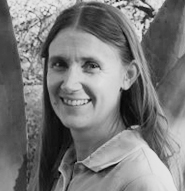Question
What is the DIR/Floortime model?
Answer
What Is The DIR Model?
- The D stands for Developmental
- The I stands for Individual Differences
- The R stands for Relationship-based
It includes an assessment portion that is completed by clinicians, parents, educators, and the interdisciplinary team. The DIR focuses on speech-language, OT, mental health, any educators that would be working with the child, and the families as well. The intervention plan is typically home-based. It is based on developmentally appropriate activities for the family to complete. These are structured Floortime sessions, semi-structured problem solving, which we will get into more detail as we go through today, sensorimotor and visual activities, and peer play, typically with one other child, to build on these functional emotional developmental capacities.
The "D" stands for developmental. We are looking at where the child is at developmentally with their functional emotional developmental capacities. The "I" is looking at the individual differences of that particular child, and these are typically sensory-based. This was something that also drew me to the DIR model because it immediately acknowledged the sensory aspect that each individual person has. This applies to all of us as we all have sensory preferences, not just the kids that we work with. And then, the "R" is relationship-based. It is focused on building rapport with the child, and that is both the parents and the clinicians. The DIR model is really an alternative to behaviorism. It is focused on children with autism spectrum disorders or other developmental challenges, but as I said, it can be used with children of any age.
Floortime
Floortime is a specific technique or intervention. We think of DIR as the model and Floortime as the intervention, and there are some basic principles to using Floortime. The first one is to follow the child's lead. We see what the child is doing, and we join in. We are going to join in at their developmental level. If they are doing an activity that is much younger than their chronological age, we are still going to join in with them at the level they are at. I struggled with trying to figure out where to begin, and this model gave me a very clear starting place. It focuses on creating appropriate play environments. This is very similar to a sensory integration frame of reference. Another basic tenet of Floortime is circles of communication. These are interactions between the child and the play partner going back and forth. One person starts an interaction, and that could be verbal or nonverbal, and then we are looking for the child to either close the circle by giving us a response back or opening another circle by creating another action or activity out of that. We want to be able to broaden the child's range of processing. This is emotional, sensory, and motor problem-solving processing. We are looking at all those different components as part of a Floortime session.
